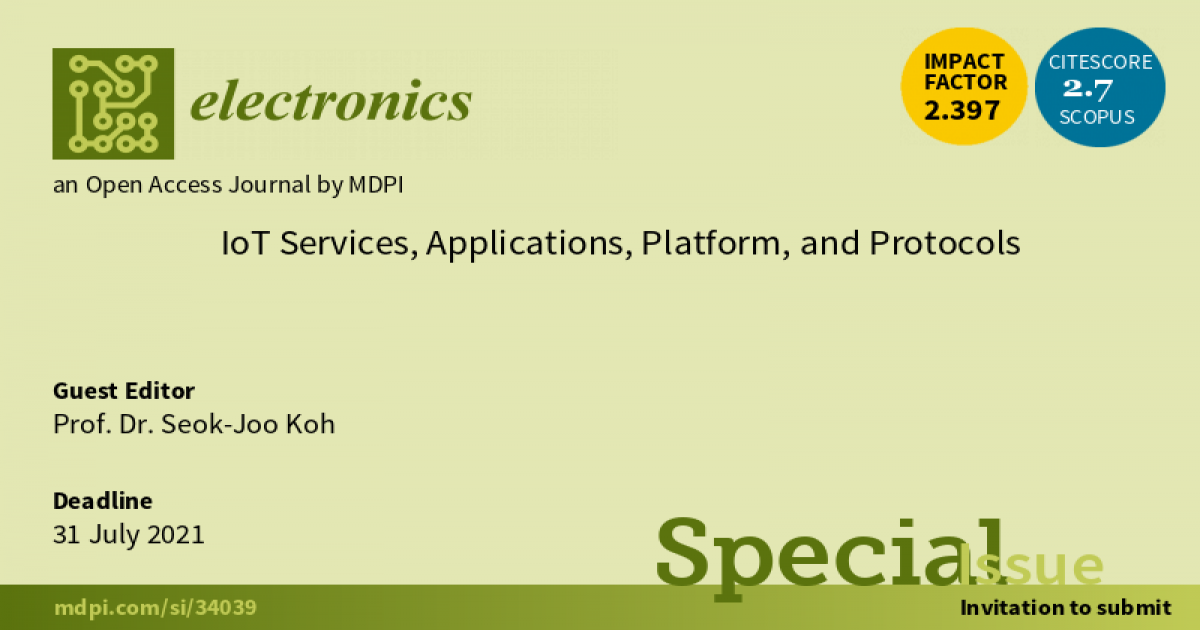IoT Services, Applications, Platform, and Protocols
A special issue of Electronics (ISSN 2079-9292). This special issue belongs to the section "Computer Science & Engineering".
Deadline for manuscript submissions: closed (31 July 2021) | Viewed by 45766

Special Issue Editor
Interests: Internet of Things; services; applications; platform; protocols; standardization
Special Issues, Collections and Topics in MDPI journals
Special Issue Information
Dear Colleagues,
With the explosive growth of Internet-of-Things (IoT) services in the world, IoT-based services and applications have been developed and deployed in the related industry, which include smart home/appliances, smart farms, smart factories, and smart healthcare. The platform and protocols for IoT services/applications are also becoming the key challenging issues in IoT-related research and engineering for future Internet.
This Special Issue focuses on the emerging services and applications for IoT and the R&D progresses on platforms and protocols for IoT services and applications. The topics of interest include but are not limited to:
- New or advanced IoT services and applications;
- Framework or architecture for IoT services and applications;
- Research and experimentation on IoT platforms;
- Performance analysis and enhancement of IoT messaging protocols (e. g., CoAP, MQTT);
- Networking protocols for IoT;
- Recent R&D activities and experimentations on IoT;
- International Standardizations on IoT (IETF, IEEE, 3GPP, OneM2M, OCF, etc.).
Prof. Dr. Seok-Joo Koh
Guest Editor
Manuscript Submission Information
Manuscripts should be submitted online at www.mdpi.com by registering and logging in to this website. Once you are registered, click here to go to the submission form. Manuscripts can be submitted until the deadline. All submissions that pass pre-check are peer-reviewed. Accepted papers will be published continuously in the journal (as soon as accepted) and will be listed together on the special issue website. Research articles, review articles as well as short communications are invited. For planned papers, a title and short abstract (about 100 words) can be sent to the Editorial Office for announcement on this website.
Submitted manuscripts should not have been published previously, nor be under consideration for publication elsewhere (except conference proceedings papers). All manuscripts are thoroughly refereed through a single-blind peer-review process. A guide for authors and other relevant information for submission of manuscripts is available on the Instructions for Authors page. Electronics is an international peer-reviewed open access semimonthly journal published by MDPI.
Please visit the Instructions for Authors page before submitting a manuscript. The Article Processing Charge (APC) for publication in this open access journal is 2400 CHF (Swiss Francs). Submitted papers should be well formatted and use good English. Authors may use MDPI's English editing service prior to publication or during author revisions.





